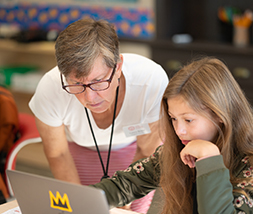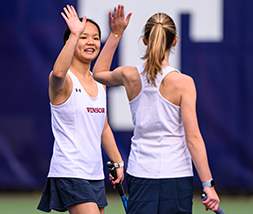In the Summer@Winsor course, Truth and Consequences, students set out to answer the question, how do we spot media bias? They explored the history and politics of media bias and reflected on how they evaluate truth and accuracy in their news sources. Mr. Braxton and Winsor alumna Ms. Anshi Moreno ‘15 led thought-provoking activities to encourage their students to investigate what makes a quality news source.
Professor Dietram Scheufele, the Chair in Science Communication at the University of Wisconsin-Madison, was the first speaker to join the class. Students prepared for his visit by reading a few of his articles on misinformation about COVID-19. Professor Scheufele discussed the challenges that confront the media in their delivery of factual, scientific information. He answered students’ questions on how to spot the red flags of misinformation and support the spread of accurate news. Anya Hanitchak ‘21 found Professore Scheufele to be “a really good resource [who] had some thoughtful insights.” She enjoyed “learning the science behind communication and news” because “it gave [her] a much better understanding of how journalism functions in society.”
Week two kicked off with a look at regional news. Through Newseum’s “Today’s Front Pages” site, which offers a state-by-state exploration of news coverage, students looked at the front pages of states where the majority of citizens voted for Donald Trump. This activity gave students insight on the number of news sources available in different states, as well as the stories newspapers prioritized on their front page coverage. Students found variation in the commentary on mask-wearing, President Trump, Black Lives Matter protests, and economic updates.
Michael Luo, digital editor of the New Yorker, visited the class at the end of the second week. Students shared ideas that stood out to them in his article, ”How Can the Press Best Serve a Democratic Society? Published only several days before his visit, the article provided an in-depth exploration of the media’s historic role in serving the public. Luo expanded on this idea in his talk and shared his hopes for the press in the future.
New York Times reporter Haley Fuchs gave an insider’s view at her work during week three. She graduated from Winsor in 2016, wrote for the Yale Daily News in college, and started working at the New York Times at the beginning of the pandemic. She has covered stories on federal executions, qualified immunity for police, and the spread of the coronavirus, among other topics. She expressed the challenges of fighting media bias and how she upholds journalistic integrity in her work. Ava Hawkins ‘22 reflected, “I enjoyed the thoughtful conversations that arose after meeting with the [guest speakers]…because I was so unaware of how media biases are reflected in our everyday conversations and thought processes.”
Throughout the Truth and Consequences course, students explored the prevalence of race in news coverage. They discussed Baratunde Thurston’s TED talk, ”How to Deconstruct Racism One Headline at a Time” in which he created a formula for race-related headlines and conducted various exercises to consider solutions to fatal racial encounters. Students also challenged the idea of “objectivity” in news coverage after watching the New Yorker video, “Rewriting Racist Headlines.” In this video, Alexandra Bell revises several New York Times front pages to provide a balanced assessment of the stories and shed light on racism in the media.
The culminating project of the class was a media bias guide. Students created a list of recommendations for evaluating the news and recognizing bias. They also found articles on a number of social identifiers, such as gender, race, and sexual orientation. The class was divided into several groups based on their selections to create media bias op-eds. The complete media bias guide and the class’ recommendations for evaluating the news serve as a testament to what the students learned and accomplished over the four weeks of the course, and the entire community can use it to develop the necessary skills for being informed consumers of news.






